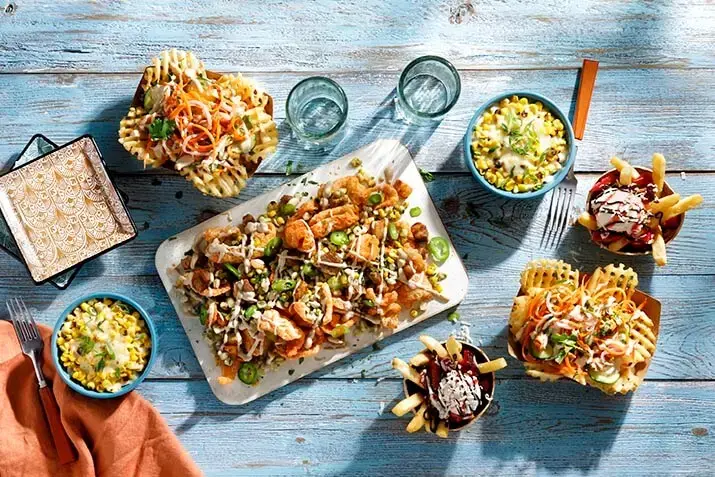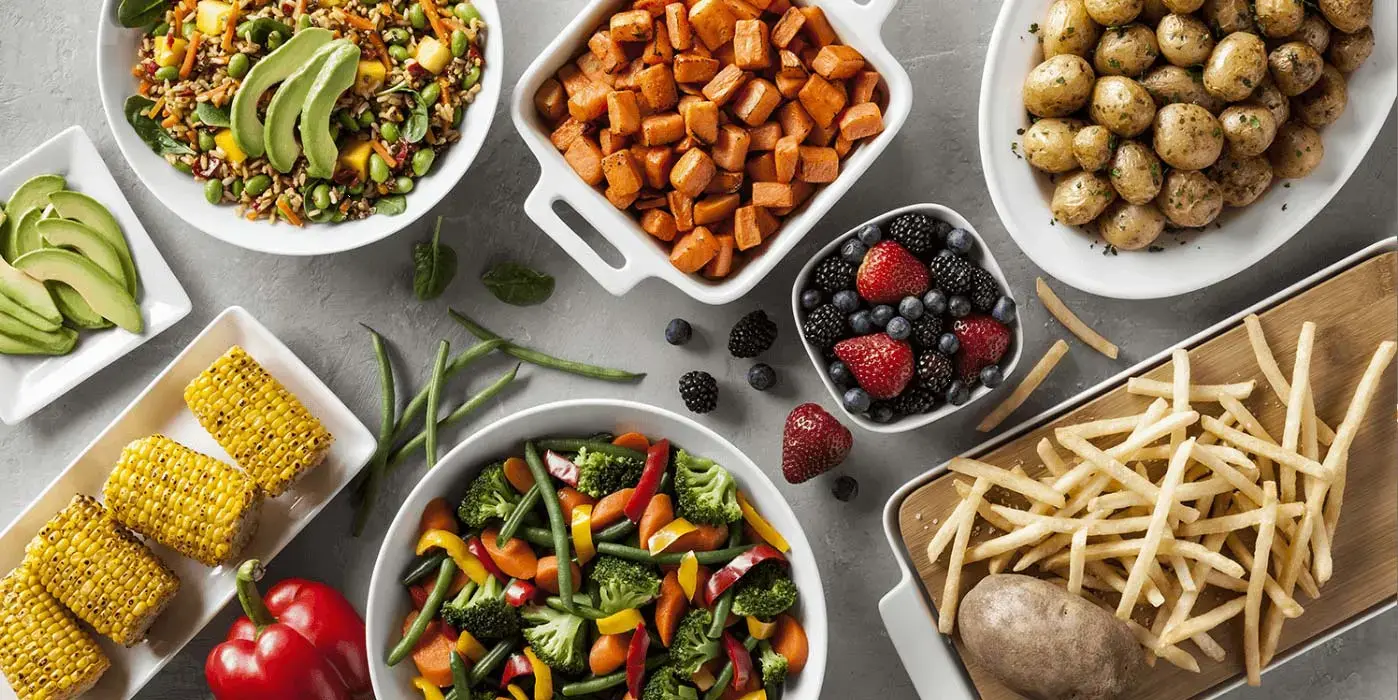Marketing
How to Boost Value When Menu Prices are Rising
11/13/2023

Cost versus benefit. Bang versus buck. No matter how you define it, the concept of value is at the forefront of the American consumer’s mind these days—especially when it comes to dining out. And who could blame them?
The average restaurant check is up nearly 11% over the last two years.1
87% of customers have noticed higher menu prices.1
75% of consumers find value important when deciding where to eat, up +5% since 2021.1
Buffeted by the pandemic and rattled by inflation, U.S. consumers can’t help but wonder, “Was that worth it?” when the check for dinner arrives.
For restaurants, how customers answer that question has enormous implications for repeat business and profitability.
So, how are your customers calculating value today? And what can you do to create additional value that brings customers back?
Good food is just table stakes
High-quality food has always been a primary factor in deciding where to eat. Taste/flavor, quality, freshness, portion size and variety are still the top five attributes that create value for customers. But today’s consumer is looking for something more.
“The definition of value in consumers’ minds has shifted a bit,” says Megan Harpell, Senior Manager of Research and Insights at Simplot. “Now it’s focused around, ‘How much enjoyment did I get for X amount.’ We’re at a point where delivering on food quality, taste, flavor and freshness is the bare minimum expectation.”
When it comes to what constitutes a good dine-in experience, younger generations are pushing the bar higher.
In the past, increasing the value for customers meant boosting the amount of food you could get for the money with dollar menus, value meals, combo meals and the like—still an important strategy, as you’ll see below. But today, operators are amping up the dining experience in ways new and old. Here are a few notable examples.
Eatertainment: From dog-oriented canine cantinas to game restaurants like Punchbowl Social, eatertainment venues push the fun factor to the next level.
Online ordering platforms: Digital ordering blew up during the pandemic as takeout and delivery soared—and it shows no signs of slowing. A good, easy-to-use digital ordering platform is a must today, especially for younger customers.
Celebrity LTOs: McDonald’s teamed up for the first time with rap artist Travis Scott to introduce a meal named after him. Soon after, the restaurant partnered with Colombian star J Balvin, creating a signature meal featuring his favorite menu items. The results? Social media buzz and sales.
Personalization: Millennials and Gen Z are famous for wanting food their way, and the rise of online ordering has only further enabled this preference.
How can you create value for restaurant customers now?
If installing a bowling alley in your restaurant seems unwise, there are plenty of other ways to tip the value equation in your favor. The most obvious of these are deals and promotions. To be effective, however, it’s important to distinguish between your 18-34-year-old customers and those 35-54.
“These two groups are in different stages of life,” says Michelle Amundson, Director of Customer Marketing at Simplot. “The types of deals and promotions that appeal to each group are not the same.”
For the 18-34 crowd, Amundson recommends focusing on limited-time offers (LTOs) and loyalty programs.
Limited-time offers and special deals for the younger crowd
“LTOs have become an important way to drive traffic, but their creativity and novelty build a lot of additional value in the minds of the 18-34 group,” says Amundson. (To learn more about how to create successful LTOs, check out our e-book, “The Power of Limited-Time Offers.”)
On the deal front, half-off specials, BOGO offers, coupons and all-you-can-eat promotions still rank among foodservice’s top promotions. Half of consumers agree that these deals are likely to influence them to visit.1
That said, don’t settle for a cookie-cutter promotion. There’s plenty of room for innovation and creativity, especially when addressing younger consumers. Choose promotions strategically and consider which types of deals are likely to resonate with your unique consumer and ultimately drive traffic to your establishment.
For example, Taco Bell’s Taco Lover’s Pass offered pass holders a taco every day for 30 days straight for one fixed price, like a subscription.
“Taco Bell knows who their customer is,” Amundson explains. “That may seem like overkill—a taco every day for a month—but to a 16-year-old, it’s the best idea in the world.”
Similarly, in 2002, Subway offered 10,000 passes for “a foot-long a month” sandwich subscription. They sold out in six hours. In 2023, Subway is bringing back the offer, this time with 250,000 passes on offer.
Again, to promote your promotion, consider your specific audience. For the 18-34 age group, your best bet will be social media, apps and websites.
What’s the deal with 35-54 year-olds?
For this demographic, it’s less about the thrill of overindulging and more about feeding the family economically.
“With this group, family meal deals and half-off specials are going to click,” says Amundson. “Make sure your portion sizes feed a family or create leftovers for lunch the next day. Also make it easy to customize orders so they can accommodate the picky eating behavior of kids. That can be a deal breaker.”
Television and direct mail are good choices for the demographic, but if those aren’t in your budget, social media is a good Plan B.
Bigger portions equate to better value (but not always)
What do you get with higher prices and smaller portions? A phenomenon known as “shrink-flation.” As restaurants have struggled with higher food and labor costs, 57% of consumers say they’ve noticed a change in portion sizes.1 And they’re not happy about it, particularly in casual dining and family-style-restaurants:
Since 2021, the importance of portion size has increased by double digits.1
And 65% say portion size plays an important role in the perception of value they receive while dining out.1
The reality is only 12% of restaurants have actually reduced their portion sizes.2 Still, consumers are clearly on the lookout. So, if you have to cut your portions to preserve margins, how can you do it without incurring customers’ wrath?
“We lean into the idea of purposefully smaller portions that really pack a punch,” says Harpell. “Think of a mini’s menu, or sides as appetizers, or shareable plates that really fit that niche for between-meal snacking.”
If tapas come to mind, you get the gist of the idea: small plates with big, satisfying flavors that aren’t meant to fill you up in a single go, a concept tapas lovers embrace. The margins? Enviable.
Another way to win the portion game is to offer a smaller portion of the same dish for less.
Blufish Sushi Bistro in the Chicago area offers their delicious rolls in two sizes: a 10-piece offering and a 5-piece offering for those with smaller appetites. While the 5-piece version costs less, it still costs more than half as much as the 10-piece version, so you get higher profitability, all while reducing potential food waste, a major issue in U.S. foodservice.
A seamless experience adds up to better value, too
No one likes to wait to order or pay their bill. Today, technology allows consumers to place and pay for orders easily, reducing friction and leading to greater purchase frequency. This rings true for your younger customers in particular.
According to consumers, the three most important technologies that enable frictionless dining are:
Personalized ordering/delivery: “Personalized ordering is a big deal for Millennials and Gen Z,” says Harpell. “Whatever their personalizations might be, there’s a higher confidence if they can enter them themselves in an app versus telling someone at the counter. This ups the experience for them.”
Seamless ordering on-premise: “In the limited-service space, there is no hesitation to order from a kiosk, especially when the kiosk helps them tap into a loyalty program. Every time they order, they’re earning points or menu items as rewards,” says Harpell.
Seamless payment: “It's huge to be able to bring that tablet or card scanner right to the table while your customers are finishing up so they don't have to flag down a server,” says Amundson.
To increase value, get to know what your customers value most
With the cost of food and labor rising, operators have little choice but to raise menu prices. So it’s more important than ever for restaurants to find creative, new ways to make dining out “worth it.” If you pay close attention to what your customers value most, you’re halfway there.
1 Technomic, Value and Pricing, 2023
2 Datassential, 2023



